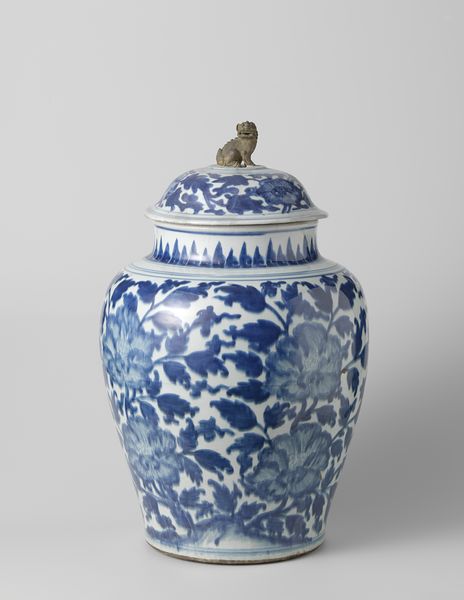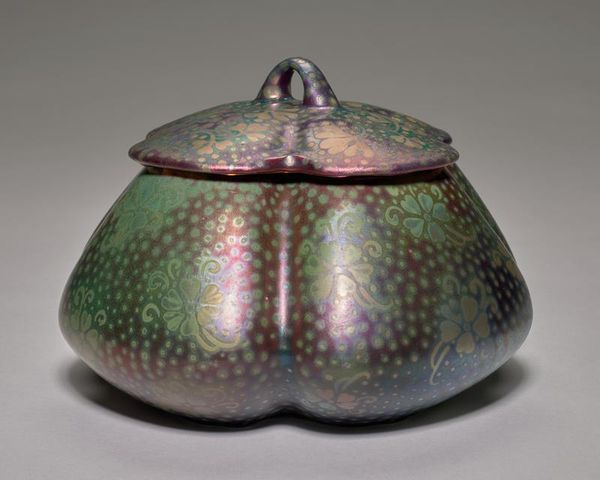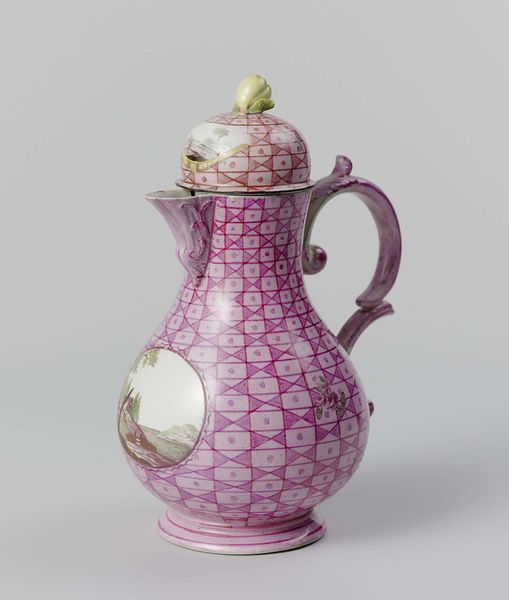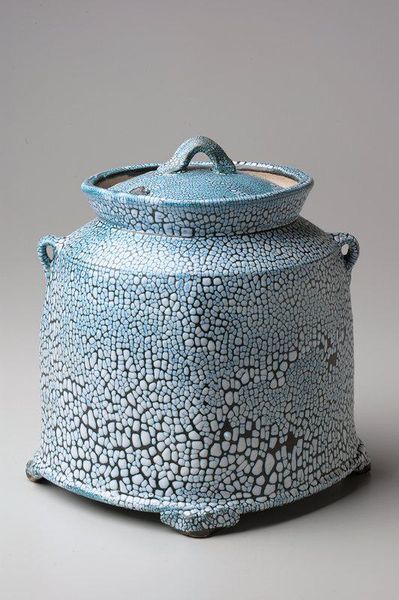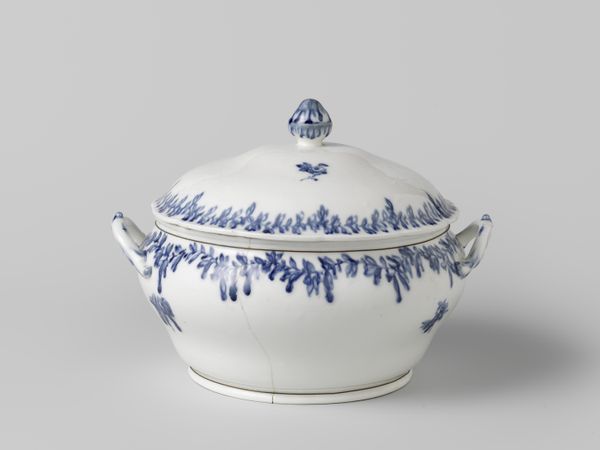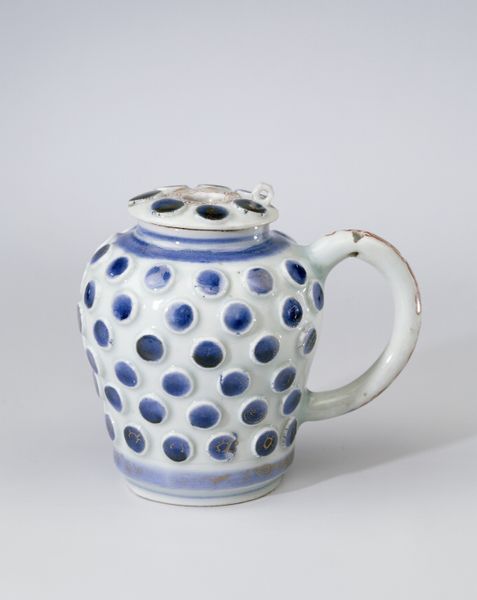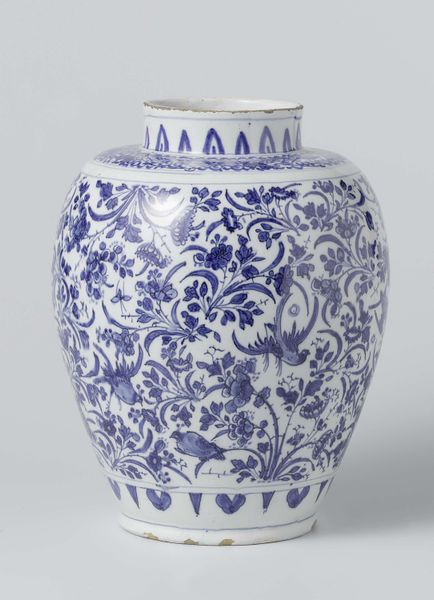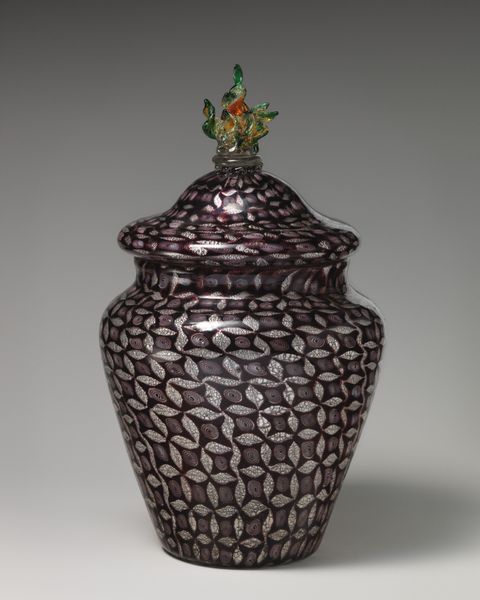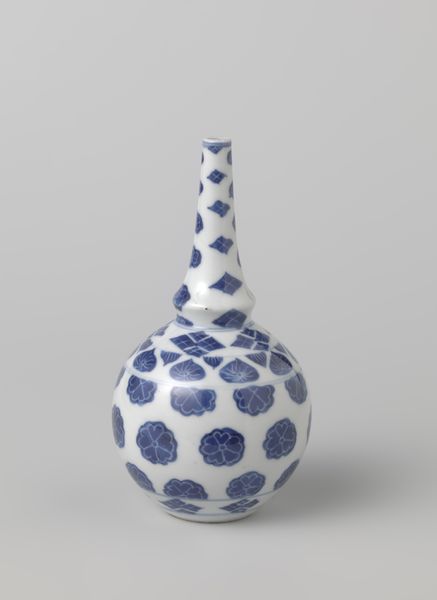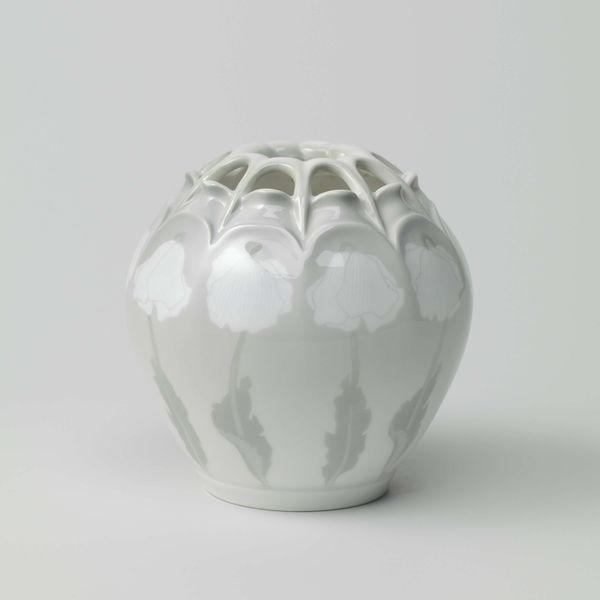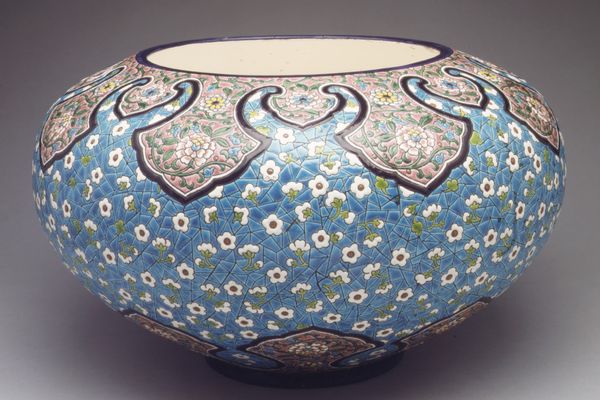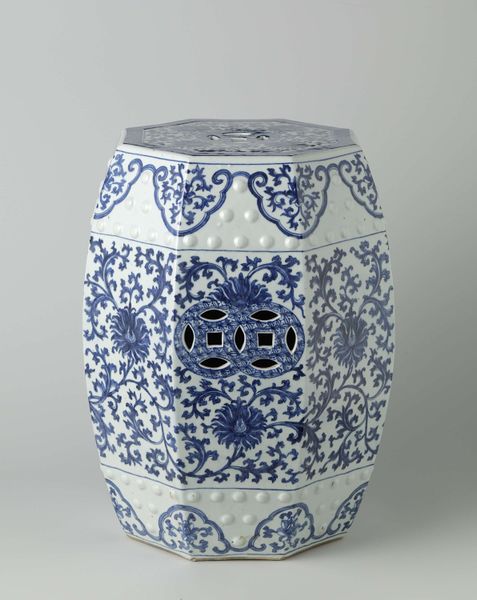
ceramic
#
art-nouveau
#
ceramic
#
orientalism
#
decorative-art
Dimensions: height 35.9 cm, height 22.6 cm, diameter 31.6 cm, height 14.3 cm, diameter 29 cm
Copyright: Rijks Museum: Open Domain
Curator: I'm immediately drawn to its quietness; that muted indigo and the repetitive floral motif give off such a peaceful, almost melancholic aura. Editor: We’re looking at a ceramic punch bowl with a lid by Richard Riemerschmid. It dates roughly from 1902 to 1915 and represents a fascinating blend of Art Nouveau and Orientalist styles within the broader scope of decorative arts. Curator: Orientalism...that explains the subtle sense of exoticism woven into the domestic object. I’m interested in how that plays out in relation to turn-of-the-century anxieties around cultural exchange and the "other." The repetitive floral pattern, almost like a dense field, might subtly represent a societal structure—how individuals exist enmeshed in the broader group. Is this a symbol of controlled opulence or just pretty decoration? Editor: Materially, the glaze is really interesting. Notice how the dark blue almost pools within the indented floral designs? The process likely involved careful carving or stamping to achieve that intricate surface before the firing, which dictated how that blue settles. It gives a real sense of depth, inviting closer inspection of labor practices. Considering the era and class connotations of a "punch bowl," whose labor was being celebrated—and whose went unnoticed? Curator: Absolutely! The act of drinking together is, and has always been, laden with meaning. Social bonds reinforced or tensions masked. Given the Orientalist influence, was this object intended to signal cosmopolitan sophistication or just partake in the appropriation so common at the time? And for whom was the punch bowl intended to be an object of consumption? To signal a move toward modernity or perhaps nostalgia for more traditional gatherings? Editor: That focus also opens a larger material question. Riemerschmid may have envisioned this punch bowl as luxury craft for wealthy buyers, but its survival speaks to another consumption cycle of object retention. It moved from display object into becoming a valuable historic asset, displayed under new contexts of artistic and national value. Curator: Right, a domestic artifact that transcends the personal sphere to engage wider conversations of societal norms, artistic trends, and cultural appropriation—even after over a century! That’s precisely why it fascinates me. Editor: Agreed, understanding the process and its place in art history certainly adds to our viewing pleasure, reminding us that even decorative art had means of production in the hands of labor.
Comments
No comments
Be the first to comment and join the conversation on the ultimate creative platform.
